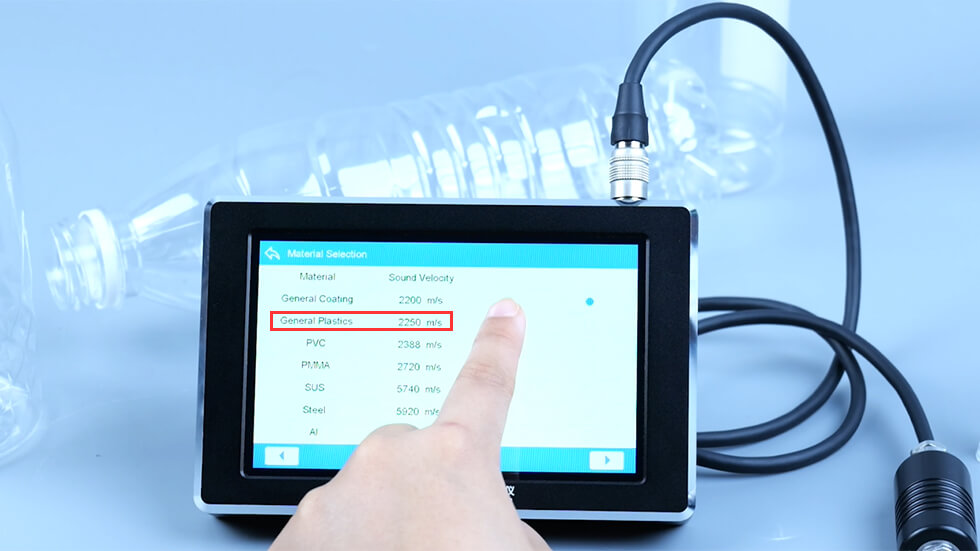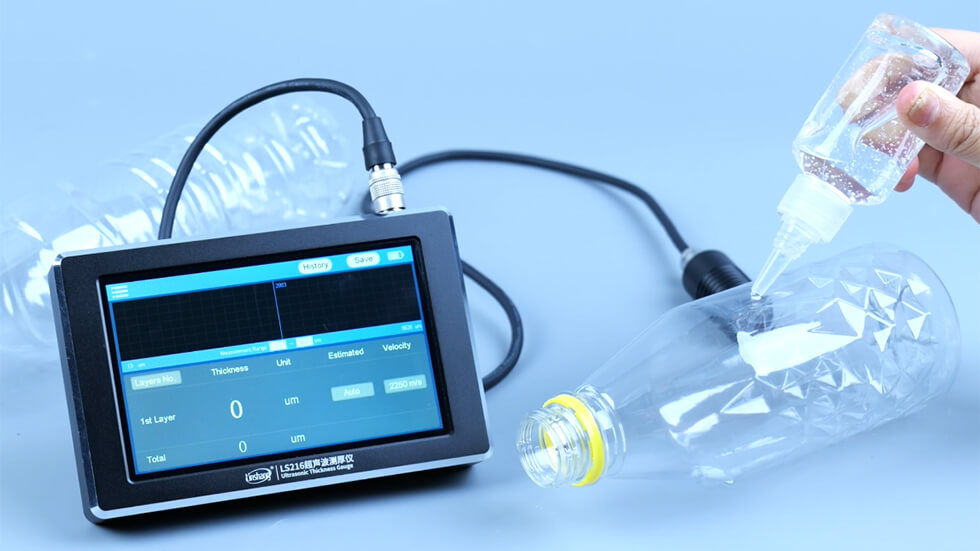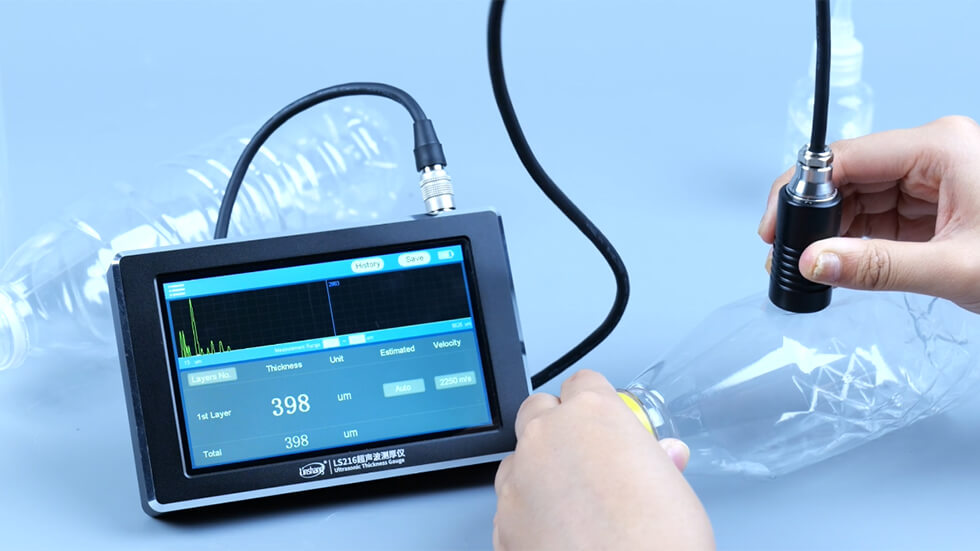How to Measure the Thickness of Plastic Bottles? Use An Ultrasonic Thickness Gauge
In the packaging industry, plastic bottles are becoming increasingly popular, especially in sectors such as beverages, cosmetics, pharmaceuticals, and daily chemicals. The packaging quality of plastic bottles directly impacts product sealing, safety, and user experience. Among the many quality control parameters, wall thickness measurement of plastic bottles is a crucial indicator. So how can we accurately measure the thickness of plastic bottle walls? This article introduces you to an efficient and non-destructive method—the ultrasonic thickness gauge.

Why Measure the Thickness of Plastic Bottle Walls?
As a typical blow-molded product, the wall thickness distribution of plastic bottles directly affects their strength, stability, and service life. If the wall is too thin, it may crack or leak; if too thick, it leads to higher material costs and resource waste. Therefore, measuring plastic bottle thickness during production is essential not only for ensuring product quality but also for effective packaging control and cost reduction. Especially in mass production, the ability to monitor thickness changes quickly and consistently plays a key role in enhancing a company’s competitiveness.
Why Choose an Ultrasonic Thickness Gauge?
Traditional methods for measuring plastic thickness often involve cutting the bottle, which is time-consuming and destructive—making real-time, in-line inspection impossible. In contrast, the ultrasonic thickness gauge uses the principle of sound wave propagation for non-destructive testing and offers several significant advantages:
Non-destructive Testing: No need to cut the bottle; thickness can be measured directly on the wall.
High Precision: With micrometer-level resolution, it is ideal for measuring thin-walled plastic containers.
Fast Response: Quick measurements make it suitable for batch inspections and process control.
Easy to Use: Portable and convenient—set the correct sound velocity and read the result instantly.
Ultrasonic thickness gauges also perform reliably on complex-shaped, transparent, or semi-transparent plastic bottles, making them well-suited for use in production lines, quality inspection departments, and laboratories.
How to Measure Plastic Bottle Wall Thickness with an Ultrasonic Thickness Gauge?
Using an ultrasonic thickness gauge is one of the most efficient and reliable ways to measure plastic bottle thickness. The Linshang LS216 High Precision Ultrasonic Thickness Gauge adopts high-speed ADC data acquisition technology and features a resolution of 1μm, making it especially suitable for measuring thin-walled plastic containers. Below is a step-by-step guide using the LS216 as an example:
Power On the Device
Turn on the LS216 ultrasonic thickness gauge.
-
Set the Correct Sound Velocity
LS216 has a built-in library of common material sound velocities. Tap “2200 m/s” to enter the sound velocity settings. Choose “Known Material Velocity Setting,” then select “Common Plastics.” For specific plastics like PET, PE, or PP, select “Manual Velocity Setting” and enter the corresponding sound velocity manually.
Apply Coupling Agent
Apply an adequate amount of coupling agent to the test area. This eliminates air gaps and ensures the ultrasound wave transmits properly into the plastic material.
-
Take the Measurement
Press the probe vertically against the test point and keep it still. The measured thickness will instantly display on the screen.

Select the appropriate sound velocity

Apply coupling agent

Thickness measurement
The wall thickness of plastic bottles affects not only their appearance and functionality but also the overall packaging safety and cost control. Choosing a reliable ultrasonic thickness gauge helps enterprises easily achieve accurate thickness measurement and packaging quality control. Whether you’re a manufacturer or a quality inspection agency, Linshang Technology offers professional ultrasonic measurement solutions. Contact us today to learn more about plastic thickness testing and recommended products!